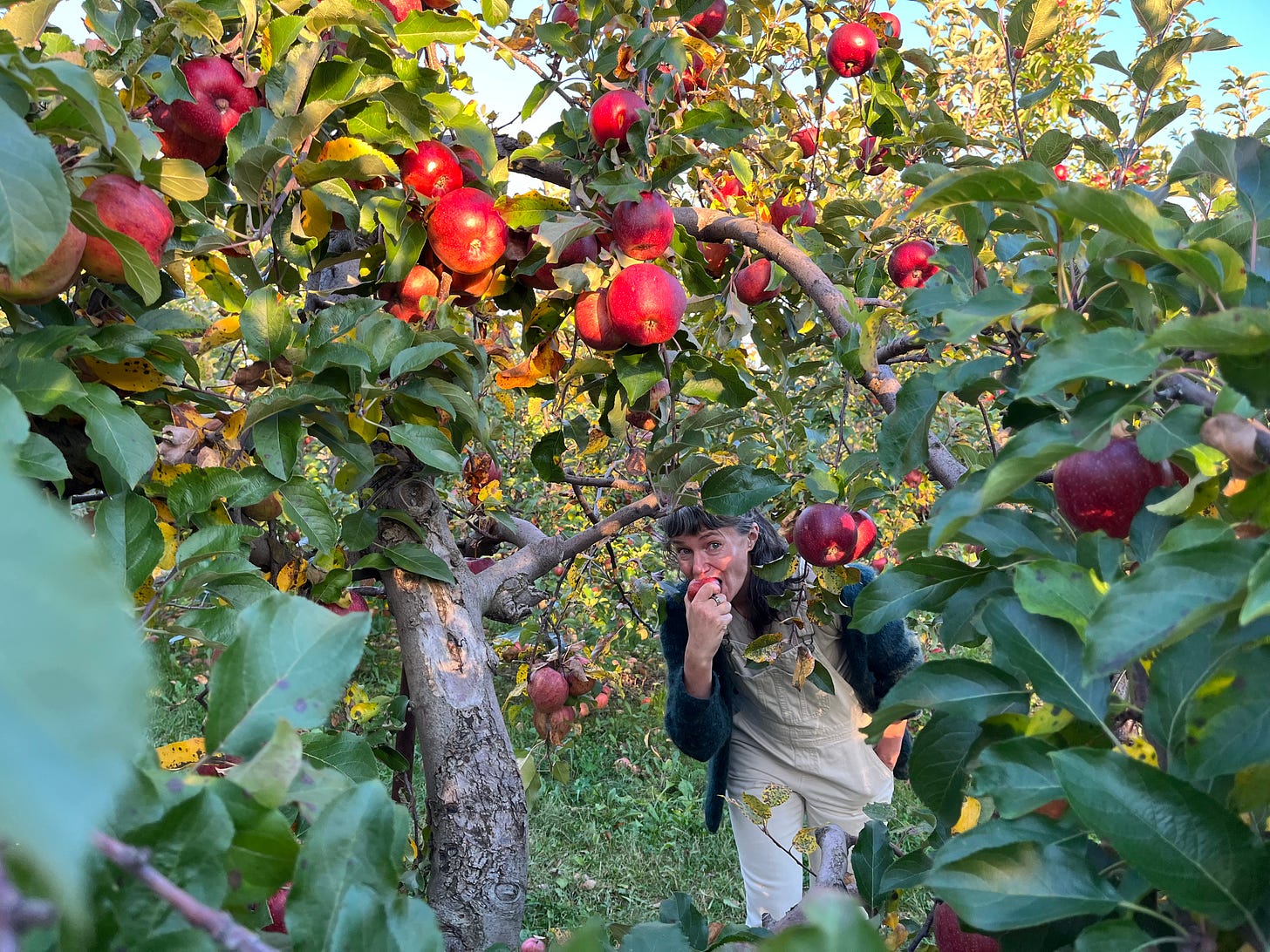Masks & Gestures
Shadow times

Falling into the cyclical spin of traditional quarter and cross-quarter days, the 8 landmarks pacing out the year, is like waltzing or square-dancing. Did you ever dance one of those as a kid, squeaking sneakers across a gym floor? The constraint is liberatory, and giddy you reel in time with the room.
Halloween is like that. I prefer the mystery of cross-quarters (Halloween, Candlemas, Beltane, Lammas) to the majesty of the quarters (solstices and equinoxes), though they propel each other, inward-looking leading to the outward, back and forth, inhale, exhale. This week’s gateway to the cold is a reminder to lean into the introspective momentum. We’re only 6 weeks away from winter solstice, with another 6 weeks again until February 2, when there’ll be enough light in the northern hemisphere to sprout seeds again. It’s quick. Like summer, it comes and goes, turning faster than you think.
Each of the 8 yearly waypoints provides an opportunity to tank up on lore, to be out in nature and to consider ritual. It’s always the same, and always different. My Irish kin would have celebrated Samhain (literally “summer’s end”) with a bonfire honoring ancestors and the harvest. The stroke of midnight, a betwixt and between moment of magic, invited the dead to mingle with the living, and one might catch sight of Púca, the mischievous horned half-goat/half-man, or Callieach, the weathered and wrinkled goddess of dark and cold.
This year, however, I’m most curious about the notion of masking. As a fashion writer of many years, I attuned myself to the archetypical suggestions of costume, clothes that referenced modern demigoddesses from cowgirl to dominatrix and businesswoman to ballerina, and accoutrements that align us with intention, the shoe that accentuates an aspect of ourselves we hope to amplify. Of course, as Jung pointed out, some people hide behind the mask of persona every day, a false self they present to the world. But for others who are more in touch with deeper layers, masking can be, paradoxically, revelatory, allowing shadow-y aspects of the self to appear. It’s both the stuff of the oldest shamanism and religious rites, but also Dr Jekyll and classic Hollywood—the alter ego arising once a mask is firmly in place.
Just now, today, I considered an archetype I’ve felt drawn to lately (it’s a secret), and as part of my practice I stood before a mirror and emulated her potency. It’s about gesture and modulation. Channeling the generative-destructive Indian goddess Kali, for example, as I learned from one of my tantra teachers, you might find an end range in pure, unbridled chaotic rage. The practice comes not only in expressing that, but in learning how to distill it down—slowly, slowly, and through the body—until you find the most subtle gesture possible: the single raised index finger holding all the force of the most explosive iteration. It’s like running scales, up and down you go, getting big, getting small, a super-charged creative practice for anyone working both sides of the conscious/unconscious divide.
So I don’t want to dress up this year—sadly, no Halloween party invitations!—but besides my modulation practice I also realized that a carved pumpkin makes a beautiful avatar. Isn’t a jack-o-lantern a kind of a mask? I bought a head-sized pumpkin and am capping the week’s creative cross-quarter exploration with a carving session by candlelight.
The question of the moment is, which archetype compels you? Which mask might bring out something forbidden and true, given the chance? XJessica
Noh’s Secret Beauty

In Japan, as in many cultures, before masking became entertainment, as theater, it was central to religious life. Noh, through its masks, retains that foundational mystery. A Noh mask carved from a piece of cypress wood isn’t simply a tool, it’s a sacred object, handed down through generations of actors and imbued with the otherworldly power of their performances. When wearing a mask, Noh scholars explain, the actor doesn’t imitate life, but becomes one with an ancient archetype.
At its core, Noh philosophy brings together monomane, gestures that imitate things, with yugen, a nearly undefinable term that’s fascinated aesthetes for centuries and means “obscure,” or clouded. It alludes to a mysterious quality of beauty that’s never overt, always veiled, and in a single word describes the melancholy of moonlit autumn nights and a feeling of tranquil loneliness, spinning a mood that’s bittersweet and etheric.
As the great master of Noh, the 14th century playwright Zeami put it, “when you keep a secret, a flower blooms.”
Oh, hello.
If you are enjoying these odes to autumn and its creative winds, please share widely! I am encouraged by the recent burst of new subscribers and will diligently continue as long as there is enthusiasm for the project. Thank you for the opportunity to share what I’m thinking in this way.



